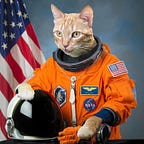What Might a Galactic Federation Look Like?
Last week, Haim Eshed, the former Israeli Space Security Chief said that both Israel and the United States had been contacted by aliens from a Galactic Federation. More details are offered in his book, where he says the aliens insist that humanity isn’t ready for a full “first contact” yet.
This raises a lot of questions, and one of the big ones is — what would a Galactic Federation really look like? An article in the Wall Street Journal poked fun at the situation, with the author joking that he’s an alien and that space governance is “really boring.” Of course, that’s possible, but there as many other possibilities as well.
The answer depends partly on science — the realities of interstellar travel and communication that humanity may not have discovered yet. Is it possible to travel faster than the speed of light? To only communicate that way? Or is light-speed the ultimate barrier? On the flip side, Soviet astronomer Nikolai Kardashev imagined a civilization that could harvest most of the energy output of its entire host galaxy. The Kardashev Scale for interstellar civilizations is named after him.
The problem with building such civilizations, as Douglas Adams put it, is that space is big. Really Big. The nearest star to Sol (or sun), and to Earth, is Proxima Centauri, about 4.2 light years away. That means that even if humans could travel close to light speed (670,000,000 mph, or 1,000,000,000 kph) it would take more than four years to get there. To get to the center of our galaxy, or to stars much further away, is almost unimaginable at that speed. The diameter of our galaxy the milky way is over 105,000 light years, which means a lot of difficulties… and possibilities:
A Galactic Archipelago: Our galaxy could be home to disparate, far-flung planetary unions, which mostly manage to colonize their own star systems. Given what we currently know about physics and space travel, this is certainly possible. Colonies on Luna, Mars, and the moons of Jupiter and Saturn help us fit in hear. The Expanse series describes and Earth-like civilization liek this.
A Ruined Empire: It could be that in some bygone era, galactic colonization was easier. Perhaps a rare resource made interstellar travel easier, or a series of wormholes and galactic highways had been setup when the galaxy was younger, and left to crumble. There might be relics of ancient super-structures like the stellar rings in Halo or more advanced Dyson Spheres. Former pieces of such an empire much each declare themselves the lone ‘Galactic Federation,’ while vying for control.
A Loose Republic: Perhaps the easiest to imagine, this form of Galactic Federation would resemble the assembly of states in the USA, The Federation in Star Trek, or the Republic in Star Wars. It would allow cooperation, but also some autonomy for its members. Such a republic would likely involve scientific discoveries beyond what humanity has so far — allowing communication faster than the speed of light, and most likely FTL (faster than light) travel too. At present, it would take years just to send a message to the nearest star system, and years more to hear the reply.
A Super-Technological Empire: Our galaxy may already be colonized by an advanced civilization, with interstellar ships, networks of wormholes, an advanced but stealthy communications network, and a central galactic government. A galactic “zoo” of different intelligent species would meet in massive space stations and central cities near convenient star systems. Their scientific knowledge would far exceed our own. However, if such a civilization exists, it’s curious we haven’t seen signs of it sooner. Perhaps they’ve ‘cloaked’ Earth and other planets to allow us to develop on our own.
Benevolent Curators: It may be that interstellar travel and communication is impossible for lifeforms like humans, but more practical for intelligent machines or of other creatures that can survive the harsh conditions of space and navigate for centuries or longer when the need arises. If this is the case, the Galactic Federation might be different than most forms of government humans have tried so far.
Whatever the case, and whether Professor Eshed’s revelations are true, it’s exciting to think about. The discoveries awaiting humanity in our galaxy have the potential to revolutionize the fields of physics, astronomy, chemistry, and biology, and even our own understanding of our place in the universe. But for now, while we wait for such discoveries, we have to continue relying on our own imaginations.
